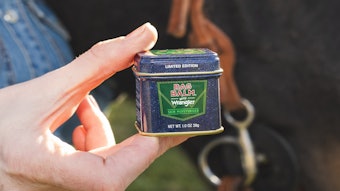Editor's note: This article excerpt, from the September 2012 issue of Cosmetics & Toiletries, provides an overview of melanosome manipulation, in brief. The complete article provides a broader view of chemical and biological agents capable of causing hypopigmentation via interactions through the different stages of the melanogenic pathway. To access the complete version of this or other articles in our digital magazine archives, subscribe to the free digital edition of Cosmetics & Toiletries magazine.
Melanin is the inherent compound responsible for pigmentation and it is found in the hair, skin and eyes. It plays an important role in protecting skin from the harmful effects of UV radiation and in scavenging toxic drugs and chemicals. Biological agents interfere with pigmentation through different mechanisms—ranging from interaction during the initial stages of melanogenesis, to the destruction of the melanocyte—and this article focuses on the key ones: tyrosinase inhibition, maturation and degradation; MITF inhibition; downregulation of MC1R; interference with melanosome transfer; and desquamation and peeling.
Once melanin is synthesized in cells, it is stored in melanosomes that are transferred to keratinocytes. Keratinocytes that contain melanin then move up through the epidermal layers until they become part of the SC, where the pigment becomes visible. For this reason, interfering with melanosome maturation or transfer is one means to reduce the appearance of hyperpigmentation. A novel mechanism for the regulation of pigmentation is through the inhibition of the keratinocyte receptor proteaseactivated receptor 2 (PAR-2). The inhibition of serine proteases results in an impaired activation of this receptor on the keratinocyte, which leads to the accumulation of melanosomes within the melanocyte. Therefore, the inhibition of PAR-2 can block the transfer between cells and in turn block the dispersion of pigment to the keratinocytes.
An example of an ingredient that can provide this effect is yarrow extract. Achillea millefolium or yarrow is a flowering plant native to the Northern Hemisphere. This perennial plant is rich in centaureidine, a flavonoid glucoside that reduces dendrite growth and the transfer of melanosomes to keratinocytes. Movement of melanosomes along melanocyte dendrites is necessary for the transfer of melanin pigment from melanocytes to basal and suprabasal keratinocytes. Therefore, a reduction in the growth of melanocyte dendrites reduces the amount of melanin that is transferred to the outer layers of the skin in the keratinocytes.
Plasma membrane lectins and their glycol-conjugates are also critical molecules involved in this transfer process. Minwalla et al. investigated the effects of these molecules on the viability of melanocytes and keratinocytes and on the reversibility of melanosome-transfer inhibition induced by these agents using an in vitro melanocyte-keratinocyte coculture model system. Results indicated that lectins and neoglycoproteins were capable of inducing apoptosis in a dosedependent manner to melanocytes or keratinocytes in monoculture. The dosages at which lectins did not affect cell viability produced an inhibitory effect on melanosome transfer when used alone or in co-cultures of melanocyteskeratinocytes. Co-cultures treated with lectins resumed normal melanosome transfer in three days after the removal of the inhibitor, proving the reversibility of this effect.
Since the original reports of Olivier, Schwartz and Warren in the early 1940s describing the depigmenting effects of monobenzyl ether of hydroquinone, a notable number of phenolic compounds have been evaluated as inhibitors of melanin synthesis. For this reason, herbal extracts of botanicals rich in phenols, flavonoids, coumarins and other derivatives have gained significant attention as potential hypopigmenting agents.










